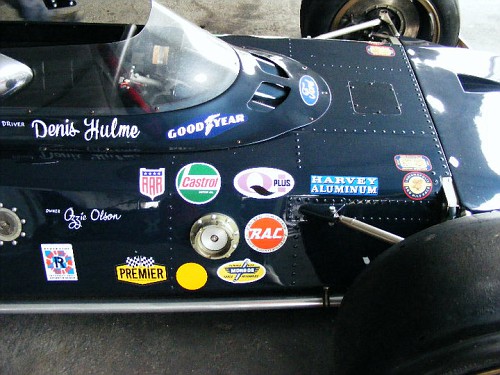|
|
Post by Patrick on Aug 15, 2019 14:16:57 GMT -8
|
|
|
|
Post by 2whl on Aug 15, 2019 15:03:56 GMT -8
Great conversions Patrick. I'm constantly amazed with how you turn toys into race car replicas.
|
|
|
|
Post by robhart on Aug 15, 2019 17:38:33 GMT -8
Excellent models! What are the large diameter pipes on the bottom edges of the tub for?
|
|
|
|
Post by Joel_W on Aug 30, 2019 6:02:39 GMT -8
Patrick,
Your conversions from toys just blew me away. All the finished models are simply outstanding.
Joel
|
|
|
|
Post by Chris K. Hale on Aug 30, 2019 10:16:59 GMT -8
Excellent models! What are the large diameter pipes on the bottom edges of the tub for? They are water lines, the FIA ( which included Indy at that pint) decided , for safety reasons water lines could not be run through the interior of the body inc. tub. so that was the style for several years, inc. Indy, Gurney tried to tuck them in a bit as seen below. I would assume they also aided in cooling in a slight amount... later designers like Gordon Murray proved them safe, ie Brabham surface radiators.Could you imagine if the FIA still created the regulations and design rules for Indy  Cars? ...uuuuggghhhh I just threw up in my throat a little........ Chris |
|
|
|
Post by Joel_W on Aug 30, 2019 10:51:47 GMT -8
Chris,
while I understood the reasoning behind mandating that the water pipes run outside of the pit, I just gotta believe that those pipes took a lot of abuse from being exposed to the track surface, and when there was a off course excursion, it could certainly be a disaster.
Joel
|
|
|
|
Post by afx on Aug 30, 2019 18:12:08 GMT -8
The single radiator was mounted in front with the water lines extending back to the engine as can be seen in this image.  |
|